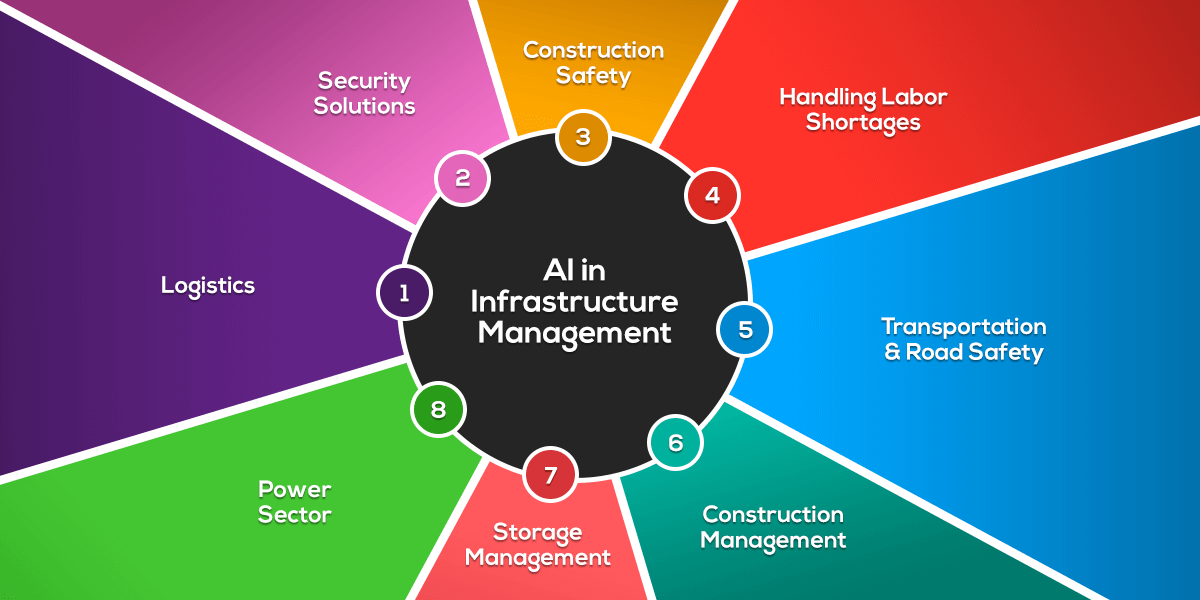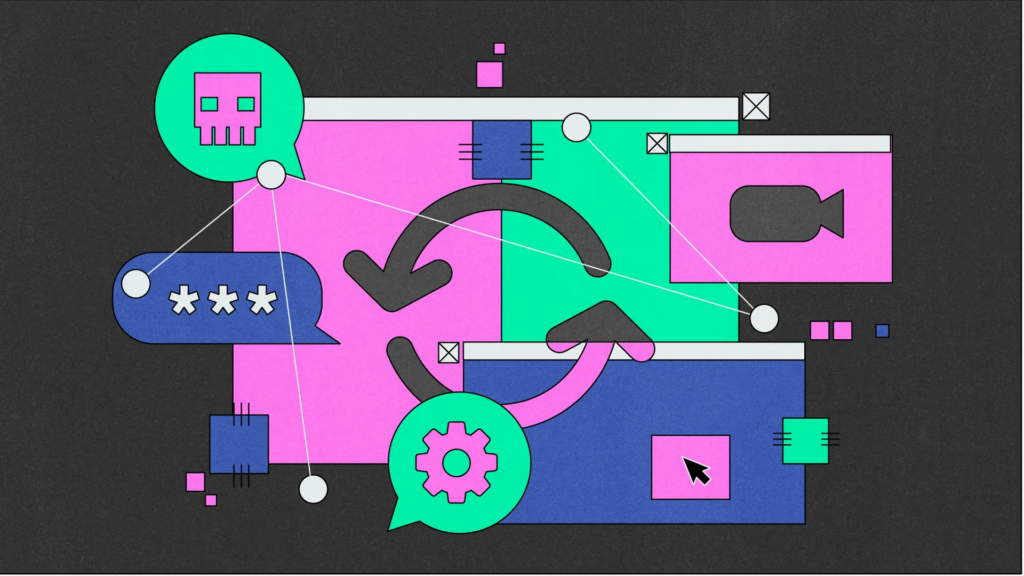Infrastructure management refers to the process of overseeing and maintaining the essential physical and technological structures necessary for the functioning of an organization or a system. It involves the planning, coordination, deployment, operation, and maintenance of various infrastructure components, such as hardware, software, networks, facilities, and other related resources.
Infrastructure management is crucial for ensuring the smooth and efficient operation of an organization’s IT systems, telecommunications networks, data centers, and physical facilities. It involves tasks such as monitoring system performance, addressing issues and outages, implementing upgrades and patches, managing security measures, and optimizing resource utilization.
In the context of IT infrastructure, management activities can include managing servers, databases, storage systems, networks, and other hardware and software components. It also involves managing virtualized environments, cloud services, and data backups. Infrastructure management may be performed by an organization’s internal IT team or outsourced to a third-party service provider.
Effective infrastructure management helps organizations achieve high availability, reliability, and performance of their systems. It ensures that the infrastructure is aligned with business objectives, supports the organization’s operations, and enables scalability and growth. Additionally, infrastructure management plays a critical role in ensuring data security, disaster recovery, and compliance with relevant regulations and standards.
Benefits of IT infrastructure management
IT infrastructure management offers several benefits to organizations. Some of the key advantages include:
- Improved System Reliability: Effective infrastructure management helps ensure that IT systems are reliable and available to support the organization’s operations. It involves proactive monitoring, preventive maintenance, and timely issue resolution, reducing downtime and minimizing the impact of system failures.
- Enhanced Performance: Infrastructure management involves optimizing system performance by fine-tuning hardware, software, and network configurations. It helps identify and address bottlenecks, resource constraints, and other performance issues, resulting in improved system response times and user experience.
- Scalability and Flexibility: With proper infrastructure management, organizations can scale their IT resources up or down based on changing business needs. It enables efficient resource allocation, capacity planning, and the ability to quickly provision or decommission hardware, software, and network components.
- Cost Efficiency: Effective infrastructure management helps organizations optimize their IT investments and reduce costs. By identifying areas of inefficiency, consolidating resources, implementing virtualization, and leveraging cloud services, organizations can lower hardware and software expenses, minimize energy consumption, and improve overall cost-effectiveness.
- Enhanced Security: Infrastructure management includes implementing and maintaining robust security measures to protect data, systems, and networks from cyber threats. It involves regular security audits, patch management, access controls, and proactive threat detection and response, ensuring data integrity, confidentiality, and compliance with regulatory requirements.
- Business Continuity: Infrastructure management plays a vital role in disaster recovery and business continuity planning. It involves implementing backup and restore strategies, redundant systems, and disaster recovery procedures to minimize data loss and enable rapid system recovery in case of disruptions or disasters.
- Streamlined IT Operations: Proper infrastructure management helps streamline IT operations by centralizing and automating tasks. It simplifies routine activities, improves workflow efficiency, and reduces manual effort required for system monitoring, maintenance, and troubleshooting.
- Increased Innovation and Agility: By offloading routine infrastructure management tasks to specialized teams or service providers, organizations can free up their internal IT resources to focus on innovation, strategic initiatives, and core business activities. This promotes agility, faster time-to-market, and the ability to respond quickly to market changes and customer demands.
Overall, effective IT infrastructure management is crucial for organizations to maintain a reliable, secure, and high-performing IT environment that supports their business goals, improves operational efficiency, and enables digital transformation.
IT infrastructure management best practices
To ensure effective IT infrastructure management, organizations should follow these best practices:
- Comprehensive Planning: Develop a clear and well-defined IT infrastructure strategy aligned with the organization’s business objectives. This includes conducting thorough needs assessments, capacity planning, and considering future scalability requirements.
- Standardization: Establish standardized processes, configurations, and documentation for managing IT infrastructure components. This helps ensure consistency, simplifies troubleshooting and maintenance, and facilitates knowledge sharing among IT teams.
- Proactive Monitoring: Implement robust monitoring tools and systems to continuously monitor the performance, availability, and security of infrastructure components. This allows for early detection of issues, prompt troubleshooting, and proactive maintenance.
- Regular Maintenance and Patching: Establish a schedule for regular maintenance activities, including patching, firmware updates, and system upgrades. Regularly applying security patches and updates helps protect against vulnerabilities and ensures systems are up to date.
- Change Management: Implement a structured change management process to track and control changes to the IT infrastructure. This helps mitigate risks associated with changes, minimizes disruptions, and ensures proper testing and validation before implementing any modifications.
- Security Measures: Implement a robust security framework to protect IT infrastructure from cyber threats. This includes strong access controls, firewalls, intrusion detection and prevention systems, encryption, and regular security audits. Stay updated on the latest security best practices and promptly address any vulnerabilities or breaches.
- Backup and Disaster Recovery: Develop and regularly test comprehensive backup and disaster recovery plans. This includes implementing automated backup systems, offsite storage, and regular testing to ensure data and system recoverability in the event of a disaster or system failure.
- Automation and Orchestration: Utilize automation tools and scripts to streamline routine tasks and reduce manual effort. This includes automating system updates, configuration management, provisioning, and monitoring tasks to improve efficiency and minimize human errors.
- Documentation and Knowledge Management: Maintain up-to-date documentation of infrastructure components, configurations, and procedures. This helps ensure continuity, enables efficient troubleshooting, and facilitates knowledge sharing among IT teams.
- Continuous Improvement: Regularly evaluate the effectiveness of infrastructure management practices and seek areas for improvement. Embrace emerging technologies, industry best practices, and feedback from stakeholders to enhance the efficiency, reliability, and security of the IT infrastructure.
By implementing these best practices, organizations can optimize their IT infrastructure management processes, enhance system performance, improve security, and ensure a robust and reliable IT environment that meets their business needs.
IT infrastructure management vs. IT operations: what’s the difference?
IT infrastructure management and IT operations are closely related but distinct areas within the broader scope of IT management. While they are interdependent, there are key differences between the two:
IT Infrastructure Management: IT infrastructure management focuses on the planning, implementation, operation, and maintenance of the physical and technological components that make up an organization’s IT infrastructure. It encompasses the management of hardware, software, networks, data centers, storage systems, and other infrastructure resources.
Key activities in IT infrastructure management include capacity planning, system monitoring, asset management, configuration management, security management, disaster recovery planning, and maintenance. The primary goal is to ensure the availability, reliability, performance, and security of the infrastructure components that support the organization’s IT systems and services.
IT Operations: IT operations, on the other hand, involves the day-to-day activities and processes required to manage and support the IT services and systems in an organization. It includes tasks related to incident management, problem management, service desk operations, service-level management, change management, and release management.
IT operations teams are responsible for the ongoing delivery and support of IT services, ensuring that systems are running smoothly, addressing user issues and service requests, managing IT service levels, and handling IT-related incidents and problems. Their focus is on the operational aspects of IT, ensuring that services are available, meeting user needs, and adhering to service level agreements.
While IT infrastructure management focuses on the underlying infrastructure components, IT operations is concerned with the delivery and support of IT services to end-users. Infrastructure management provides the foundation and resources for IT operations to function effectively.
It’s important to note that the lines between IT infrastructure management and IT operations can sometimes blur, as both areas are closely intertwined and dependent on each other. Effective collaboration and coordination between infrastructure management and operations teams are essential to ensure the overall efficiency, availability, and reliability of IT services in an organization.
Three categories of IT infrastructure management
IT infrastructure management can be broadly categorized into three main areas:
- Systems Management: This category focuses on the management of hardware and software systems within the IT infrastructure. It includes activities such as:
- Server Management: This involves the provisioning, configuration, monitoring, and maintenance of servers. It includes tasks such as hardware setup, operating system installation, performance monitoring, and patch management.
- Network Management: Network management encompasses activities related to managing and monitoring the organization’s network infrastructure. It includes tasks such as network configuration, monitoring network performance, troubleshooting network issues, and implementing security measures.
- Storage Management: Storage management involves the management and optimization of data storage resources, such as storage area networks (SANs), network-attached storage (NAS), and cloud storage. It includes tasks like provisioning storage, data backup and recovery, capacity planning, and data lifecycle management.
- Database Management: Database management involves the administration, monitoring, and optimization of databases within the IT infrastructure. It includes tasks such as database design, performance tuning, backup and recovery, security management, and data integrity maintenance.
- Security Management: This category focuses on ensuring the security and integrity of the IT infrastructure. It includes activities such as:
- Identity and Access Management: Managing user identities, authentication, and access controls to ensure that only authorized individuals have access to IT resources.
- Vulnerability Management: Regularly assessing and remediating vulnerabilities in the IT infrastructure to minimize the risk of security breaches and data leaks. This includes vulnerability scanning, patch management, and security audits.
- Security Incident and Event Management: Monitoring and responding to security incidents and events, including threat detection, incident response, and forensic analysis. It involves activities like intrusion detection, log monitoring, and incident handling.
- Security Policy and Compliance: Developing and enforcing security policies, procedures, and guidelines to ensure compliance with industry regulations and organizational standards. This includes activities such as policy development, security awareness training, and compliance auditing.
- Service Management: This category focuses on managing IT services and ensuring their delivery aligns with the organization’s business needs. It includes activities such as:
- IT Service Desk: Providing a single point of contact for users to report issues, request assistance, and receive IT support. This involves incident management, problem resolution, and service request fulfillment.
- Change Management: Managing changes to the IT infrastructure to minimize disruptions and ensure that changes are properly planned, tested, and implemented. It includes change assessment, approval, and communication processes.
- Service Level Management: Monitoring and managing service levels to ensure that IT services meet agreed-upon performance targets and service level agreements (SLAs). This involves performance monitoring, SLA reporting, and service improvement initiatives.
- Service Continuity and Disaster Recovery: Planning and implementing measures to ensure the continuity of critical IT services in the event of a disaster or disruption. This includes disaster recovery planning, backup and restore procedures, and testing of recovery capabilities.
These categories provide a high-level overview of the different aspects of IT infrastructure management. Organizations may have specific roles or teams dedicated to each category or a combination thereof, depending on their size, complexity, and IT requirements
IT infrastructure management components
IT infrastructure management consists of several components that collectively ensure the efficient operation and maintenance of an organization’s IT infrastructure. These components include:
- Hardware: Hardware components encompass physical devices such as servers, computers, networking equipment (routers, switches), storage devices (disk arrays, tape libraries), and peripherals (printers, scanners). Effective management involves hardware provisioning, configuration, monitoring, and maintenance to ensure optimal performance and availability.
- Software: Software components include operating systems, databases, applications, and system utilities. Infrastructure management involves software installation, configuration, patching, and upgrades to ensure stability, security, and compatibility with hardware components.
- Network: Network infrastructure management encompasses activities related to network devices, connectivity, and protocols. It includes managing routers, switches, firewalls, load balancers, and other network components. Network management ensures network availability, performance optimization, security, and proper network configurations.
- Data Center: Data centers house the physical infrastructure that supports an organization’s IT operations. Data center management involves monitoring environmental conditions (temperature, humidity), power distribution, cooling systems, and physical security measures. It also includes managing server racks, cabling, and equipment placement to ensure efficient operations.
- Storage: Storage management focuses on managing data storage resources effectively. This includes provisioning, capacity planning, data backup and recovery, data replication, and ensuring data integrity and availability. Storage management also involves implementing storage technologies such as SAN (Storage Area Network) or NAS (Network-Attached Storage).
- Virtualization: Virtualization technology enables the creation of virtual instances of operating systems, applications, and resources. Virtualization management involves managing virtual machines, hypervisors, virtual networks, and virtual storage. It includes tasks such as provisioning virtual resources, optimizing resource utilization, and ensuring high availability and performance of virtualized environments.
- Security: Security management involves protecting the IT infrastructure from threats and unauthorized access. It includes implementing security measures such as firewalls, intrusion detection and prevention systems, antivirus software, access controls, encryption, and vulnerability management. Security management also involves monitoring and incident response to address security breaches or vulnerabilities.
- Monitoring and Performance Management: Monitoring and performance management components involve the use of monitoring tools and systems to track the performance and health of IT infrastructure components. This includes monitoring server performance, network traffic, resource utilization, and response times. It also involves generating alerts, analyzing metrics, and taking proactive measures to maintain optimal performance.
- Incident and Problem Management: Incident management focuses on the timely resolution of IT issues and incidents. It includes recording, categorizing, prioritizing, and escalating incidents to restore normal service operations. Problem management focuses on identifying the root causes of recurring incidents and implementing preventive measures to minimize future occurrences.
- Change and Configuration Management: Change management involves controlling and managing changes to the IT infrastructure, ensuring that modifications are properly planned, tested, and implemented. Configuration management focuses on maintaining accurate and up-to-date information about the IT infrastructure’s configuration items (CIs), including hardware, software, and network components.
These components collectively contribute to effective IT infrastructure management, enabling organizations to optimize performance, ensure security, and maintain the reliability and availability of their IT systems and services.
IT infrastructure management & cloud services
IT infrastructure management and cloud services are closely intertwined, as cloud computing has revolutionized the way organizations manage and operate their IT infrastructure. Here’s how they are connected:
- Infrastructure as a Service (IaaS): Cloud service providers offer Infrastructure as a Service, which allows organizations to outsource their hardware infrastructure. With IaaS, organizations can provision and manage virtualized infrastructure resources such as virtual machines, storage, and networking components in the cloud. IT infrastructure management in the context of IaaS involves tasks such as provisioning and configuring virtual resources, monitoring performance, ensuring security, and optimizing resource utilization.
- Platform as a Service (PaaS): PaaS provides a cloud-based platform that includes the underlying infrastructure along with development tools, middleware, and databases. PaaS allows organizations to focus on developing and deploying applications without the need to manage the underlying infrastructure. IT infrastructure management in the context of PaaS involves managing and configuring the platform components provided by the cloud service provider, ensuring their availability, scalability, and security.
- Software as a Service (SaaS): SaaS provides ready-to-use software applications that are delivered over the internet. With SaaS, organizations can access and use software applications without the need for infrastructure management. However, IT infrastructure management still plays a role in ensuring the availability, performance, and security of the underlying infrastructure supporting the SaaS applications, such as servers, networks, and databases.
- Cloud Infrastructure Management: Cloud service providers also offer cloud infrastructure management services. These services focus on managing and maintaining the underlying cloud infrastructure, including hardware, networking, storage, and data centers. Cloud infrastructure management involves tasks such as provisioning and scaling resources, monitoring performance and availability, implementing security measures, and managing backups and disaster recovery.
- Hybrid and Multi-Cloud Management: Many organizations adopt hybrid or multi-cloud environments, combining on-premises infrastructure with public and private cloud services from multiple providers. IT infrastructure management in these scenarios involves managing the integration, interoperability, and coordination between different infrastructure components across various cloud and on-premises environments. This includes tasks such as workload placement, data migration, network connectivity, and ensuring consistent management practices across different infrastructure environments.
Cloud services have transformed IT infrastructure management by providing flexible, scalable, and cost-effective solutions. Organizations can leverage cloud services to offload the burden of managing physical infrastructure, gain access to advanced infrastructure capabilities, and focus on higher-value activities such as application development, data analysis, and innovation. However, effective IT infrastructure management is still required to ensure the optimal performance, security, and availability of the cloud infrastructure and services being utilized.
Key features of infrastructure management solutions
Infrastructure management solutions offer a range of features to help organizations effectively manage and maintain their IT infrastructure. Some key features of infrastructure management solutions include:
- Monitoring and Alerting: Infrastructure management solutions provide real-time monitoring capabilities to track the performance, availability, and health of infrastructure components. They generate alerts and notifications when issues or abnormalities are detected, allowing IT teams to take timely action.
- Configuration Management: These solutions help manage the configuration of infrastructure components, including servers, networks, and storage devices. They provide centralized configuration management, version control, and automated configuration deployment to ensure consistency and enforce best practices.
- Asset and Inventory Management: Infrastructure management solutions help organizations track and manage their hardware and software assets. They provide asset inventory and tracking capabilities, including information on hardware specifications, software licenses, warranties, and maintenance schedules.
- Capacity Planning and Resource Optimization: These solutions assist in capacity planning by analyzing historical data and predicting future resource needs. They provide insights into resource utilization, performance trends, and potential bottlenecks, helping organizations optimize their infrastructure resources and avoid over-provisioning or underutilization.
- Incident and Problem Management: Infrastructure management solutions include incident and problem management features to track and resolve IT issues. They provide ticketing systems, workflows for incident and problem resolution, and collaboration tools to facilitate communication and collaboration among IT teams.
- Change and Configuration Management: These solutions help organizations manage changes to the IT infrastructure, ensuring that modifications are properly planned, tested, and documented. They provide change management workflows, approval processes, and configuration management databases to track and control changes.
- Security and Compliance: Infrastructure management solutions include security features to protect the infrastructure from threats and ensure compliance with industry regulations. They provide security monitoring, vulnerability scanning, access controls, and audit trails to enforce security policies and address compliance requirements.
- Reporting and Analytics: These solutions offer reporting and analytics capabilities to provide insights into infrastructure performance, availability, and other key metrics. They generate customizable reports, dashboards, and visualizations to help IT teams monitor trends, identify patterns, and make informed decisions.
- Automation and Orchestration: Infrastructure management solutions enable automation and orchestration of routine tasks and processes. They provide scripting capabilities, workflows, and integration with other tools to automate repetitive tasks, streamline operations, and improve efficiency.
- Integration and APIs: These solutions offer integration capabilities and APIs to connect with other systems and tools, such as monitoring systems, ticketing systems, and configuration management databases. Integration enables data exchange, facilitates cross-platform management, and improves overall system interoperability.
These features collectively help organizations streamline their IT infrastructure management processes, enhance system performance, ensure security and compliance, and improve operational efficiency. The specific features and functionalities may vary across different infrastructure management solutions available in the market.
Read More : What is the internet of things (IoT)?





